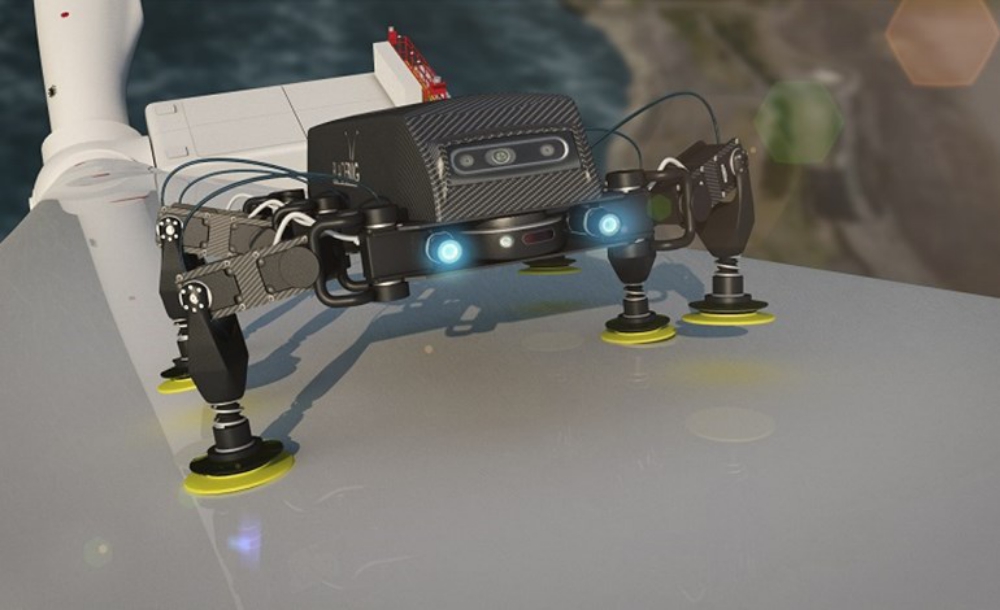A UK collaborative project developing an autonomous inspection and repair concept for offshore wind turbine blades has addressed several technological challenges in its first year. The two-year Multi-Platform Inspection, Maintenance and Repair (MIMRee) project aims to provide a demonstration of an autonomous system capable of planning its own operational missions to offshore wind farms.
The concept involves a “mothership” that will scan moving turbine blades on approach, then launch teams of inspection drones carrying blade crawlers for forensic inspection and repair of damaged blades.
MIMRee was awarded a £4.2m grant from Innovate UK.
Within the project’s first year partner Thales’ imaging system has achieved blur-free images of moving wind turbine blades at the Offshore Renewable Energy (ORE) Catapult’s Levenmouth Demonstration Turbine off the coast of Fife, Scotland.
Scanning blades for defects, without stopping turbines for days at a time, is considered a “game-changer” for wind farm operations.
Other milestones include integrating MIMRee’s mission planning software, developed by Sara Bernardini at Royal Holloway University of London, with the Thales vessel and the inspection drones.
A team from Manchester and Bristol universities developed the drones which have “successfully coordinated” launch, recovery and navigation from the vessel.
One of the aims of the project is to demonstrate an integrated inspect-and-repair system for wind turbine blades, using the BladeBUG robot, which has recently demonstrated its walking abilities on a variety of blade surfaces at ORE Catapult’s National Renewable Energy Centre.
Milestones that have been achieved in relation to the system include:
An autonomous repair arm, developed by Sina Sareh’s team at the Royal College of Art Robotics Laboratory.
The device can “rapidly switch” between modules for cleaning, sanding and top-coating damaged areas of blades, providing real-time feedback visualisation and human-in-the-loop teleoperation of repair tasks via a user-interface system.
Following experimentation with visible and short-wave infrared image capturing, Plant Integrity has produced the blade crawler’s non-destructive testing payload.
The module uses an advanced machine learning algorithm and a precision scanner for exact measurement of defects under a wide variety of ambient light conditions.
An electronic skin, called Wootzkin, patented by high-tech robotics company, Wootzano, will enable the robot to “feel” the surface of the blade.
Wootzkin also allows the robot to determine the surface conditions of the blade helping the robot to walk in an extreme environment. The technology also enables the robot’s existing vacuum system to attach onto the blade more accurately by using supervised machine learning algorithms.
Plant Integrity project lead Martin Bourton said: “This time last year we could talk about a spectacular concept.
“A year in, we can say that MIMRee is not futorology, but an imminent possibility with a host of technological breakthroughs achieved.
“The project is developing a variety of spin-off technologies: the ability to scan a working turbine, without stopping it for days while it is inspected, is just one with a very obvious benefit to industry.”
ORE Catapult operational performance director Chris Hill added:
“Robotics and autonomous systems are vital to optimising offshore wind operations and meeting our net-zero targets by mid-century, a core objective of our Operations and Maintenance Centre of Excellence.
“UK companies are well placed to lead this technological revolution and having a project like MIMRee home-grown in the UK, spearheaded by UK businesses and our leading academic institutions, gives us a competitive advantage for the supply chain of the future.”

